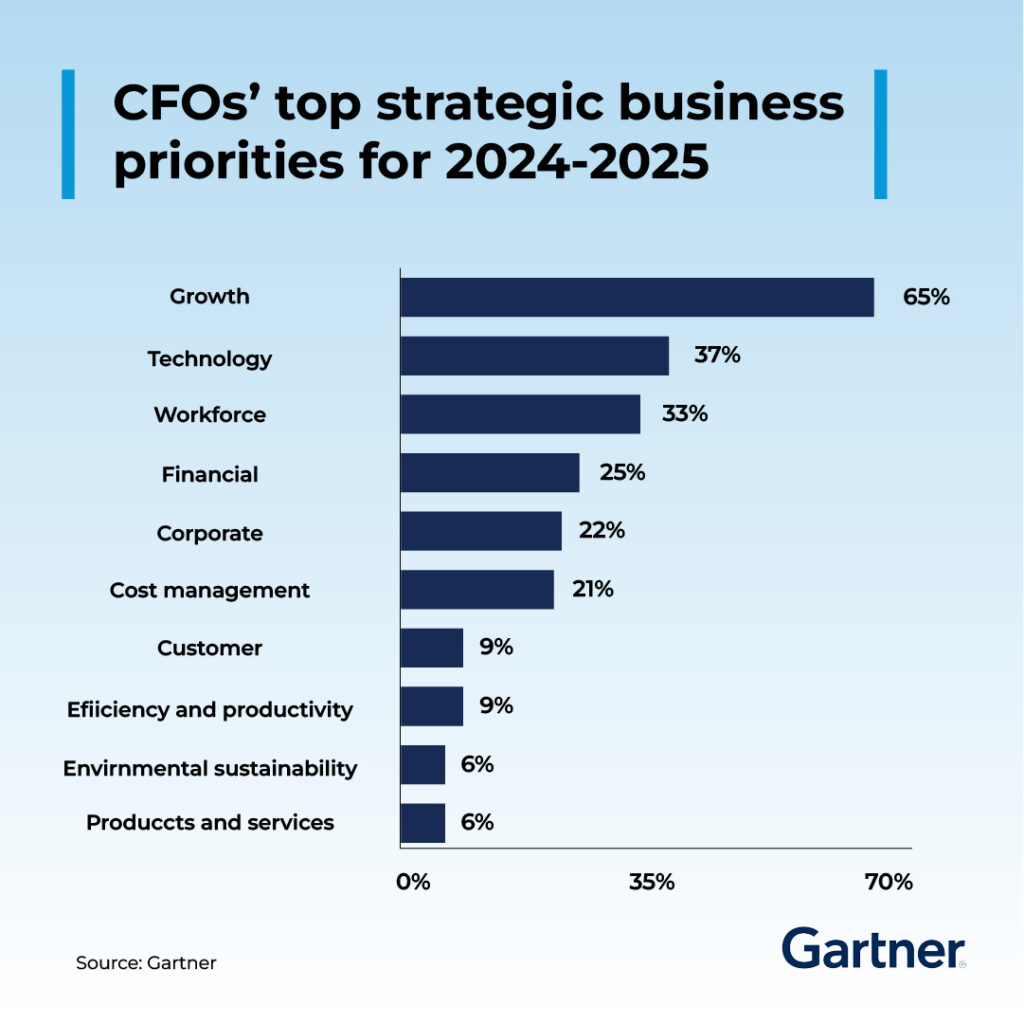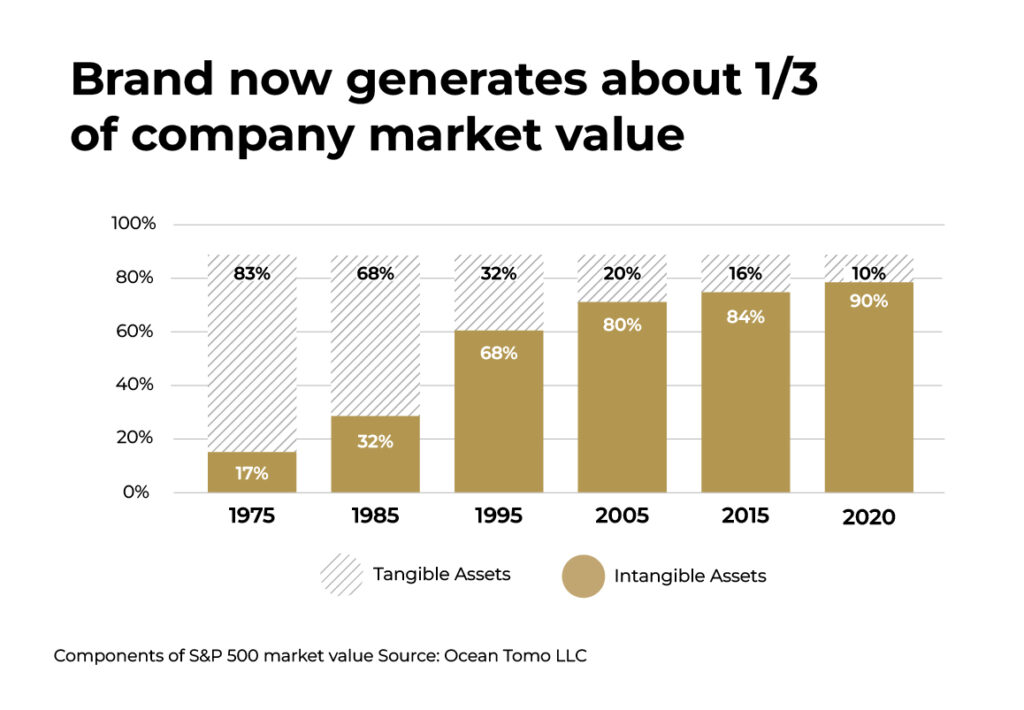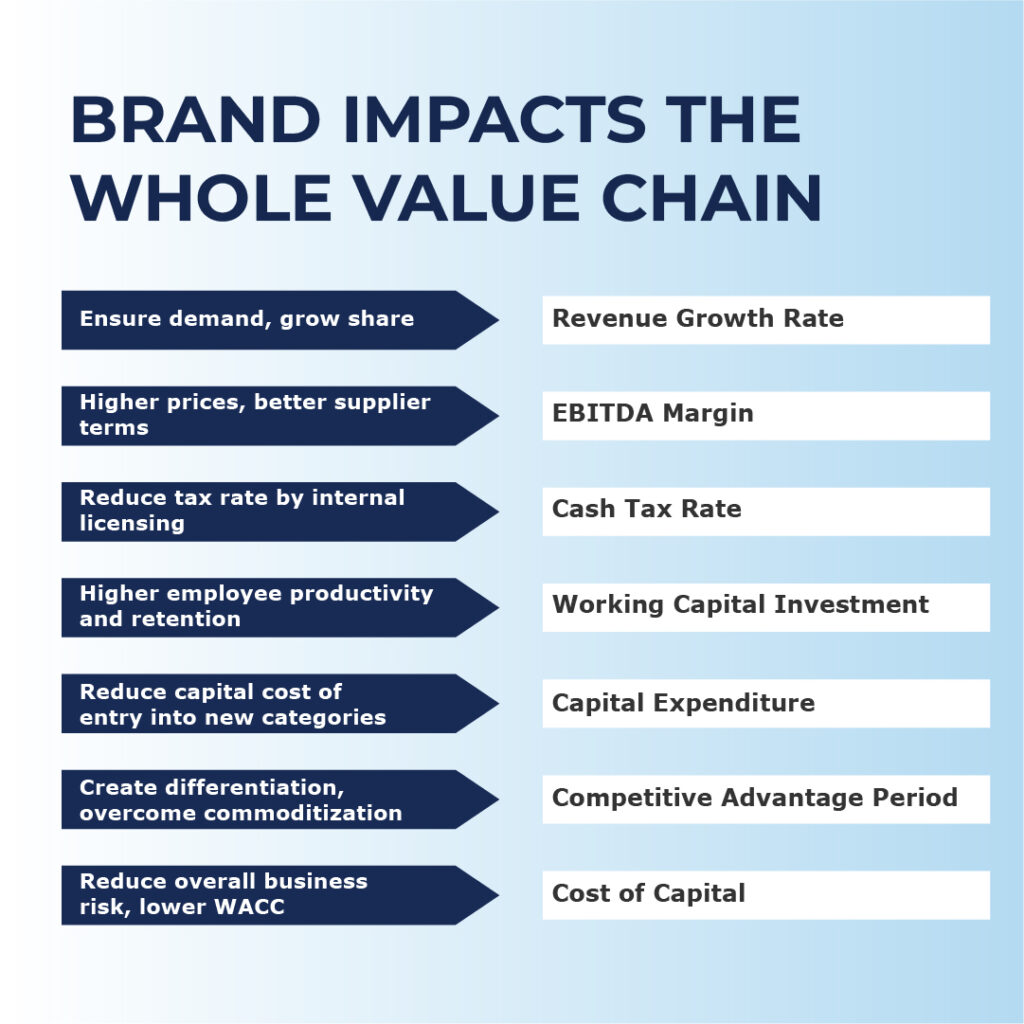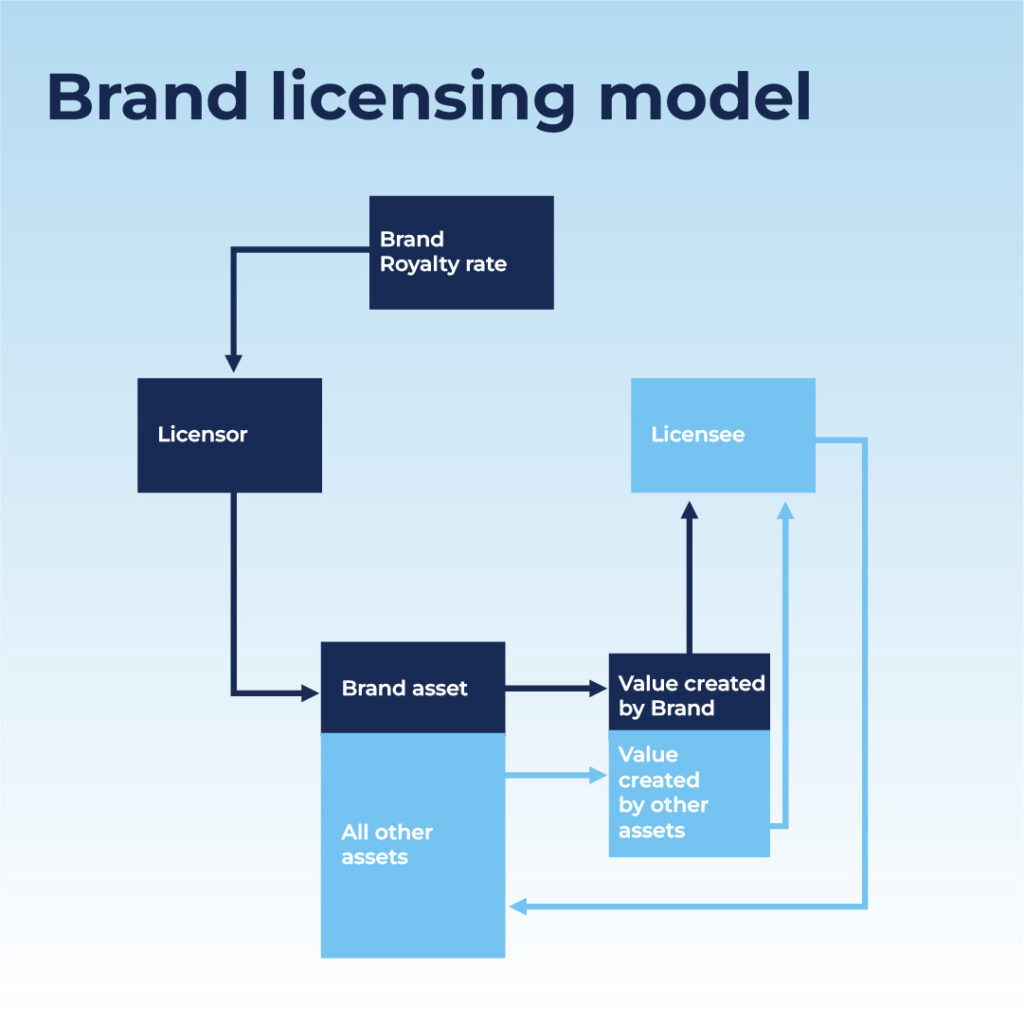Brand matters as an untapped source of value
Brand matters more than people think. Why? It is the untapped asset that has the power to deliver Alpha. What is Alpha? It’s the factor that gives companies a competitive edge and drives future revenue and profit growth.
Everyone’s looking for it. Financial analysts scour the stock market; CEOs, CFOs and Boards search their business operations in quest of it. Numerous recent surveys have shown that growth is CEO’s number one priority.

They are overlooking the most important place. Executives and Boards are obsessed with the supply chain; analysts concentrate on the efficiency of the company’s operations. The answer is right there in front of them. Brand is the untapped asset with the power to deliver Alpha. Over 80% of stock market value is represented by intangible assets, not the tangible plant, property and equipment. Brand is one of the most important intangible assets, contributing around 1/3 of market cap. 
Only technology and patents have more value. And yet, the importance of brand is not recognized. Companies ignore the incremental financial value that brand can generate for them.
Brands matter more in turbulent times
The issue is critical right now. In the world of upheaval and uncertainty in which we now live, brand matters more than ever. Brand represents a haven of safety for consumers and business customers, when everything else is shifting around them. It provides certainty amidst uncertainty. Brand is a guarantee of trust, a promise of performance. You know what you are getting when you buy a brand, whether it is high quality, cool products, performance, or good value for money. That is why brands have such high value and why their value is increasing. Technically it can be defined as a set of associations in peoples’ heads, which lead them to prefer a company’s products over those of competitors, guaranteeing an incremental flow of sales and profits. Why do people flock to the MacDonald’s in Milan’s main square, when they are surrounded by dozens of restaurants offering the best Italian cuisine? Because they know what they are getting, even though it is not the best option. They trust it.
How do brands matter? What is it about them?
Brand creates additional value across the company value chain.
On the demand side:
Brand creates a volume premium, by causing more people to choose the company’s products and buy them.
Brand can generate a margin premium. Customers may be willing to pay more for the product than an equivalent (or superior) product with a weaker brand. Why has Coca-Cola consistently been able to command a price premium of 5-10c over Pepsi, despite numerous blind taste tests that show consumers like Pepsi better? And, at a price premium, grown its market share to over 20% and knocked Pepsi down below Dr Pepper and Sprite? It’s all about brand.
Balancing volume premium and margin premium is a matter of choice. Prada deliberately sacrifices volume to achieve a high price premium. Walmart sacrifices margin for the sake of higher volume sales, making its brand stand for ‘Everyday low price’. Coca-Cola and Louis Vuitton achieve both. Louis Vuitton sells everything from its ‘Ultimate Trunk Set’ priced at over $600,000, to immensely popular plastic-coated canvas bags at around $1,000.
Brand delivers a secure stream of future revenues and profits, by building loyalty, and creating a set of guaranteed future customers who will buy from them again.
Brand attracts additional sales and profits from new customers, through the advocacy of passionate customers, who promote the brand to others.
Brand enables a company to enter new product categories, generating new revenue and profit streams. This can lead to exponential growth. Look at Dove. When it switched from marketing the superior moisturizing qualities of its bar of soap, to communicating the brand idea of ‘real beauty’, it was able to move into a much wider range of personal care products – from bath and body, to haircare, to skincare, to deodorants, to products for men and for babies. The result – sales doubled in three years, and continued to deliver double digit annual growth.
Brand also creates value on the supply side of the business:
Brand can reduce employee costs. Companies with strong brands can hire from the top business schools more easily, pay employees less and they stay longer. Studies have shown that strong brands such as Apple and Goldman Sachs can reduce hiring costs by up to 50% and cut turnover by 28%.
Brand can lead to better terms with suppliers. A strong brand can enable a company to negotiate lower cost of goods and services –suppliers want to be affiliated with the brand.
Brand can cut working capital costs. A company with a strong brand can enter new product categories or geographical markets without having to make the investment into new production facilities and people. Instead, it can license its brand to others, sit back and receive a risk-free future cash flow from royalties.
Brand can lead to lower discount rates. Lower discount rates mean higher valuations The present value of expected future earnings or cash flows from the company’s assets increases, making them more valuable. Toyota’s treasury department was puzzled by the fact that it was getting lower basis points on its bond prices than the automotive industry as a whole. They determined that the reason was brand-the same was true of P&G and other companies with strong brand. Lower basis points mean higher bond yields.
How to make your brand matter
So, there is a major opportunity to unleash the untapped financial potential of brand. How can we realize it? To create a brand that achieves its potential with external stakeholders, it first has to matter internally. The importance of brand must be recognized outside the marketing department and accepted by the senior executives and boards who make the strategic and investment decisions for the company.
This is not the case now. Brand marketers are the executives CEOs trust the least. Studies show that 90% of CEOs trust their CFOs, while 50-70% distrust their CMOs. And, though distrust of CMOs has fallen a little, their situation is getting worse. The CMO title has been rapidly disappearing. Only 42% of Fortune 500 companies now have a CMO. Marketing’s role is diminishing, subordinated to other functions – Sales (a Chief Commercial or Revenue Officer), Strategy or Digital. Marketers are being pushed down the corporate ladder, no longer in the C-Suite, still less on the Board. Often, they have the responsibility but not the authority. The budgets lie elsewhere – in the regions or product divisions.
Why is there distrust? Three main reasons:
1. Brand is the most intangible of all assets
Brand consists of perceptions. Executives can see how other intangible assets, such as intellectual property can be quickly made tangible through product development.
2. Brand is seen as longer term
People believe that brand takes longer to have an effect, with delayed financial results. This makes ROI uncertain. There is some truth in this. It takes years to build a strong brand. Brands we think of as newcomers have been around for at least 10 years. OpenAI launched in 2010, Bitcoin dates back to 2009. But once you’ve built a brand, the impact of investment is short-term, mid-term and long term.
3. Marketers are using the wrong metrics
Brand is still often dismissed as ‘fluffy.’ Why? Because measurement is based on market research, whether qualitative, quantitative or social media analysis. Even when research shows the right answer, it’s not understood outside the marketing department, and too often, outside the research department.
How do we change this?
There is only one way to achieve the executive mindset shift which is needed. It’s data. And not just facts but also figures. Marketers must demonstrate the business and financial impact of what they do and why brand matters. They must speak the language of CEOs, CFOs and Boards. And there’s only one thing these people react to. It’s money. Only by showing the financial returns will you get brand investment approved, and the right brand decisions made. Only then will senior executives cease to think of brand as a logo and advertising and understand that it is a major source of revenues and profits.
Of course, you need a powerful and differentiated brand purpose and positioning, one that crystalizes the strategic direction of the business. Of course, you need to signal it through a compelling brand visual identity and communications strategy. And, you must make it real, by getting all employees to understand and buy into it and driving brand through every aspect of the company’s operations – from product development to delivery systems, to sales and customer service, IT and finance. But you won’t get the permission and investment to do this, until you first demonstrate the returns.
6 key steps to a brand that matters
1. Get the facts
Do the research. Analyze where the market is going. Understand who your customers are, what segments they divide into, their personas. Assess what your customers want today and what they will want tomorrow. Measure how your brand stacks up against all this – what its strengths and weaknesses are compared to competitors.
2. Get the figures
Determine where the financial opportunities for your brand are. Which customers, which products. Calculate the potential market size of each opportunity.
3. Link your brand to financial value creation
Measure the current financial value of your brand. WHAT revenues, profits and value it is delivering today. HOW your brand drives value across the different factors influencing the customer purchase decision. WHERE your brand strengths and weaknesses are and where competitors are doing it better.
4. Model the future options
How much additional financial value does your brand have the ability to create, under different scenarios? These should include both Market options—
products, technologies, customer segments and geographies; and Brand options—alternative brand positionings and visual and verbal communications strategies. Assess the risks and returns of each.
5. Choose your future strategy
Select the option that will generate the greatest sales, profit and business value growth–that is how brand matters.
6. Measure the results
Put a system in place for regular measurement of the business and financial success of the brand strategy. Integrate it into your company’s budgeting process. Demonstrate what you’ve achieved so that you will get the continued investment needed for the company to realize the full brand value opportunity.
All this really isn’t difficult. But it can transform your company, dramatically grow the business and with it, the share price.


